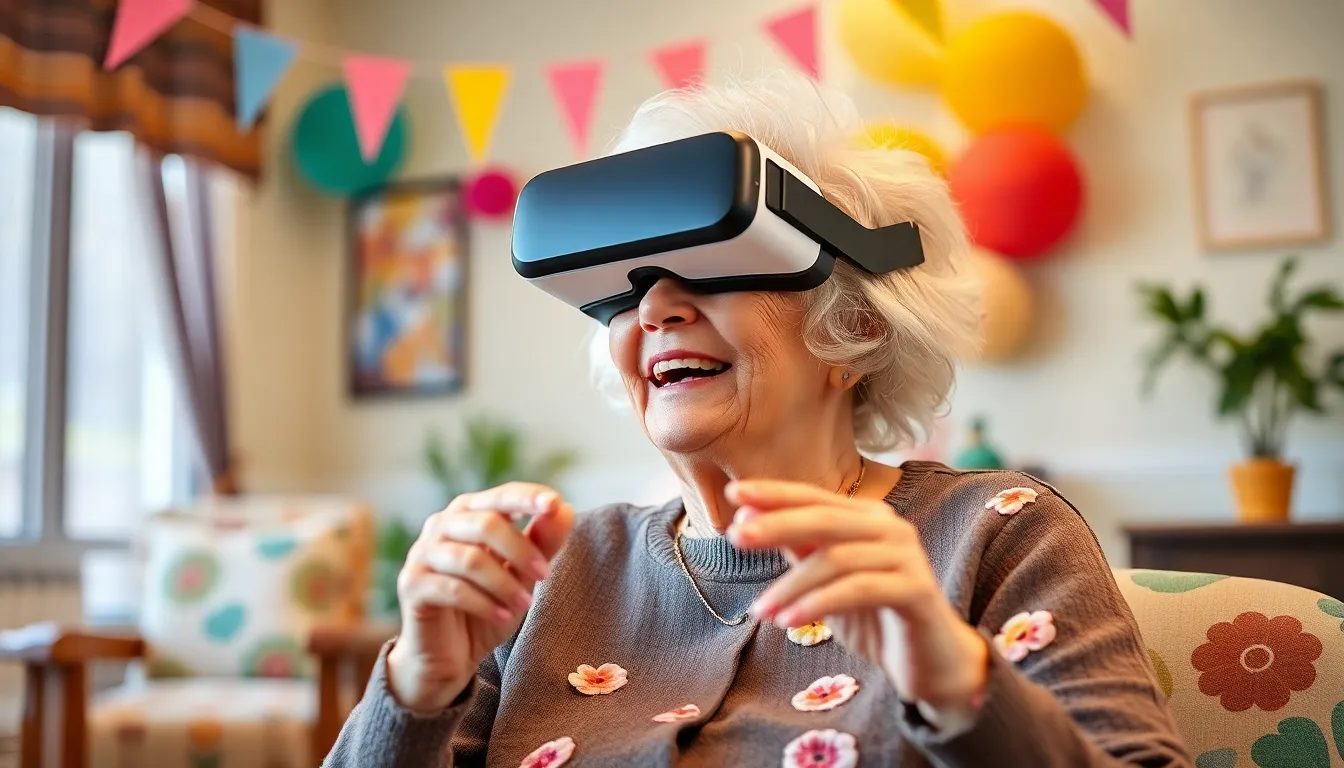Table of Contents
ToggleIn a world where nursing homes often get a bad rap, it’s time to shine a light on the positive changes and heartwarming stories emerging from these facilities. Today’s nursing home news isn’t just about bingo nights and shuffleboard; it’s a vibrant tapestry of innovation, compassion, and community. From groundbreaking health initiatives to uplifting resident experiences, there’s a lot happening that deserves attention.
Recent Developments in Nursing Homes
Current developments in nursing homes reflect growth in community and health initiatives. Innovations showcase a commitment to improving the quality of life for residents.
Legislative Changes Affecting Nursing Homes
Legislatures across various states are enacting new regulations for nursing homes, focusing on patient rights and facility transparency. Some changes include stricter staffing requirements and enhanced training protocols for caregivers. These legal adjustments aim to ensure better care and accountability, fostering a safer environment for residents.
Impact of COVID-19 on Nursing Homes
The COVID-19 pandemic significantly transformed nursing home operations, highlighting both vulnerabilities and resilient responses. Many facilities adopted enhanced infection control measures and promoted vaccination among staff and residents. Current reports show that mental health initiatives also gained traction. Increased virtual visits provided residents with social connections, proving vital for emotional well-being.
Innovations in Care

Innovations in nursing homes showcase a commitment to enhancing resident well-being and care quality. These developments highlight the integration of modern solutions that empower both residents and caregivers.
Technology Advancements in Nursing Homes
Virtual reality therapies engage residents in meaningful activities, promoting cognitive stimulation. Wearable health monitoring devices track vital signs, alerting staff to potential health concerns. Telehealth services expand access to medical professionals, ensuring timely consultations without the need for transportation. Mobile apps streamline communication between residents and families, fostering connections that matter. Augmented reality tools assist in cognitive training, creating an interactive environment that sharpens mental acuity.
New Care Models and Practices
Person-centered care approaches prioritize individual preferences, fostering dignity and autonomy. Holistic care models incorporate mental health services alongside physical health, recognizing the importance of emotional well-being. Interdisciplinary teams enhance collaboration among healthcare providers, ensuring comprehensive care tailored to each resident’s needs. Community engagement initiatives invite local organizations to participate, strengthening ties and enriching residents’ lives. As a result, these practices transform nursing homes into vibrant communities focused on enhancing quality of life.
Resident Rights and Advocacy
Nursing homes must prioritize resident rights and advocacy to create a supportive environment. Residents deserve dignity, respect, and autonomy in their daily lives.
Protecting Resident Rights
Nursing homes follow federal and state regulations designed to safeguard resident rights. These laws encompass issues such as privacy, proper medical care, and the ability to make choices about daily activities. Residents can voice grievances without fear of retaliation, ensuring their concerns are heard. They also maintain the right to form and participate in resident councils, which empower them to influence decision-making within their facilities. Communication about care plans and health-related decisions ensures that individuals remain informed participants in their own care.
Role of Advocacy Groups
Advocacy groups play a significant role in enhancing the rights of nursing home residents. Organizations like the National Consumer Voice for Quality Long-Term Care focus on establishing standards for care and championing resident interests. These groups provide resources and training to family members and residents, ensuring awareness about available rights. They often assist in navigating the legal aspects of care, helping residents address concerns with management effectively. By raising public awareness, advocacy groups influence policy changes that promote better living conditions and expand oversight of facilities.
Financial Aspects of Nursing Homes
The financial landscape of nursing homes continues to evolve, influenced by funding changes and affordability challenges.
Funding and Budget Changes
Federal and state funding significantly affects nursing home operations and care quality. Recent legislation has introduced increased funding aimed at improving staffing ratios and enhancing training programs. Additional budget adjustments focus on transparency and efficiency to ensure resources directly benefit residents. Facilities increasingly apply for grants to support health initiatives and technological advancements. With a comprehensive understanding of funding sources, nursing homes are better equipped to allocate resources effectively. Enhanced fiscal management allows for a more robust operating model that prioritizes resident care and facility improvements.
Affordability Concerns for Families
Families face rising concerns over the affordability of nursing home care. Costs typically range from $7,000 to $10,000 monthly, depending on services and geographic location. Many families struggle to cover these expenses, particularly with limited long-term care insurance coverage. Medicaid plays a vital role, covering a significant portion of costs for eligible residents. However, not all families qualify, leading to financial stress and uncertainty. Increased awareness of available financial aid options can help families navigate these challenges. Exploring all potential avenues for support ensures better access to quality care for loved ones.
Nursing homes are evolving into vibrant communities that prioritize resident well-being and quality of life. The recent innovations and health initiatives are reshaping the perception of these facilities, showcasing a commitment to compassionate care and enhanced resident rights.
As advocacy groups work tirelessly to ensure dignity and respect for residents, families can find hope in the advancements in technology and community engagement. With ongoing legislative changes and increased funding efforts, there’s a brighter future ahead for nursing home residents.
Staying informed about these positive developments is crucial for families navigating the complexities of long-term care. By understanding available resources and support, they can make empowered decisions for their loved ones.




